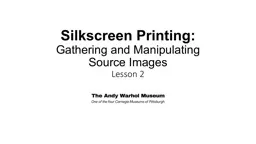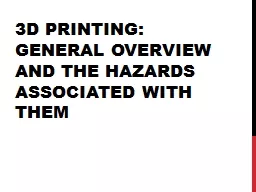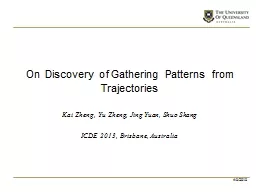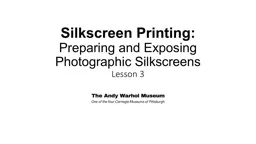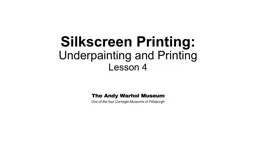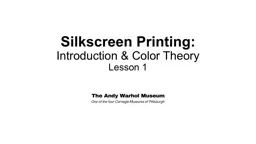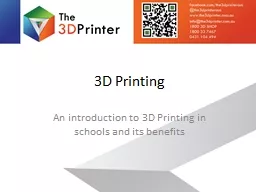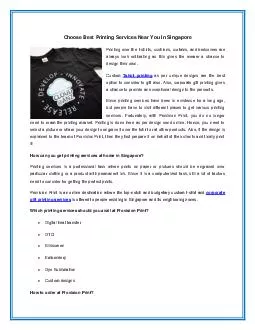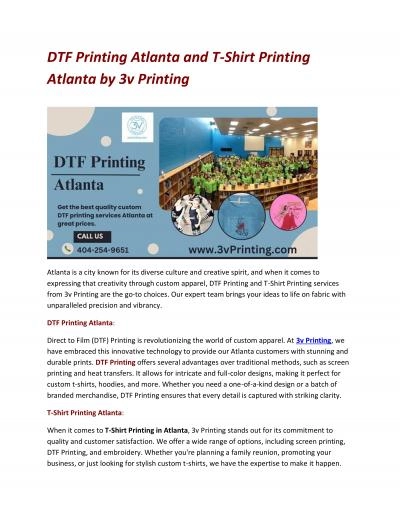PPT-Silkscreen Printing: Gathering and Manipulating
Author : sherrill-nordquist | Published Date : 2018-11-05
Source Images Lesson 2 With silkscreening you pick a photograph blow it up transfer it in glue onto silk and then roll ink across it so the ink goes through the
Presentation Embed Code
Download Presentation
Download Presentation The PPT/PDF document "Silkscreen Printing: Gathering and Manip..." is the property of its rightful owner. Permission is granted to download and print the materials on this website for personal, non-commercial use only, and to display it on your personal computer provided you do not modify the materials and that you retain all copyright notices contained in the materials. By downloading content from our website, you accept the terms of this agreement.
Silkscreen Printing: Gathering and Manipulating: Transcript
Download Rules Of Document
"Silkscreen Printing: Gathering and Manipulating"The content belongs to its owner. You may download and print it for personal use, without modification, and keep all copyright notices. By downloading, you agree to these terms.
Related Documents

